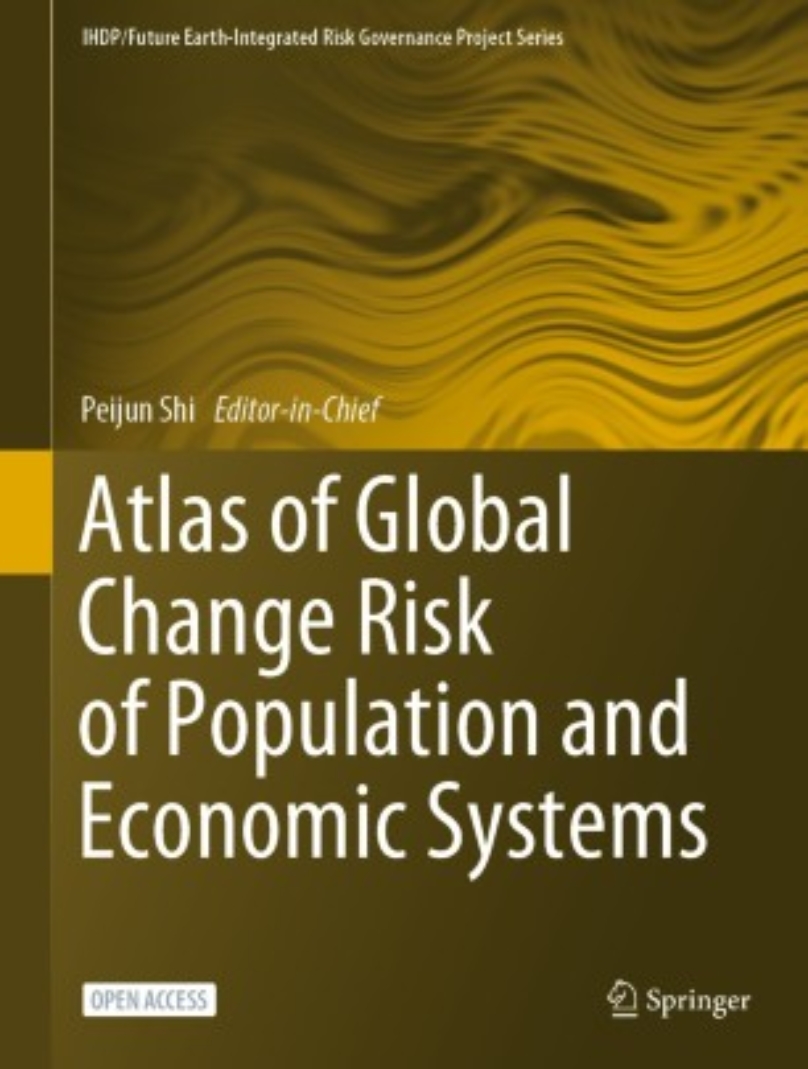Atlas of Global Change Risk of Population and Economic Systems Publicly published
The Atlas of Global Change Risk of Population and Economic Systems (English version) by BNU FGS is publicly published. The Atlas is a part of the International Human Dimensions Programme/Future Earth-Integrated Risk Governance (IHDP/Future Earth) series of publications.
 The Atlas introduced three RCP (RCP i.e., typical concentration pathways describing future GHG emissions, etc.) scenarios-RCP2.6, RCP4.5 and RCP8.5, elements of climate change such as global temperature, precipitation, high winds, etc. in the historical base period (1986-2005), the future 2030s (2016-2035) and the 2050s (2046-2065); elements of disaster-bearing bodies such as global population, major crops, industrial value added and GDP and their exposures under three combined RCP-SSP scenarios (RCP2.6-SSP1, RCP4.5-SSP2, RCP8.5-SSP3) for different time periods; future Global heat death population risk, global crop yield reduction risk, global flood death population and global flood GDP loss risk and their changes under different RCP-SSP combination scenarios in time. The maps reach a spatial resolution of 0.25 degrees with nearly 300 maps.
The Atlas introduced three RCP (RCP i.e., typical concentration pathways describing future GHG emissions, etc.) scenarios-RCP2.6, RCP4.5 and RCP8.5, elements of climate change such as global temperature, precipitation, high winds, etc. in the historical base period (1986-2005), the future 2030s (2016-2035) and the 2050s (2046-2065); elements of disaster-bearing bodies such as global population, major crops, industrial value added and GDP and their exposures under three combined RCP-SSP scenarios (RCP2.6-SSP1, RCP4.5-SSP2, RCP8.5-SSP3) for different time periods; future Global heat death population risk, global crop yield reduction risk, global flood death population and global flood GDP loss risk and their changes under different RCP-SSP combination scenarios in time. The maps reach a spatial resolution of 0.25 degrees with nearly 300 maps.
The Atlas was completed under the support of the "Global Change and Response" Key Project of the National Key Research and Development Program of the 13th Five-Year Plan. The project leader, Professor Shi Peijun, also is the chief editor of the Atlas. Professor Wang Ying, Professor Xu Wei and Professor Ye Tao are the deputy editors. Professor Wang Jing'ai, Professor Li Ning, Researcher Wang Aihui, Researcher Sun Fubao, Professor Wu Jidong, Professor Yang Saiyi, Researcher Yang Jianping, Associate Professor Chen Bo and Dr Zhou Hongjian are the co-editors.
The atlas is published by Springer and is for open access (https://link.springer.com/book/10.1007/978-981-16-6691-9). In addition, the project has also developed Global Change Risk Map Platform of Population and Economic Systems (http://grisk.info/)

